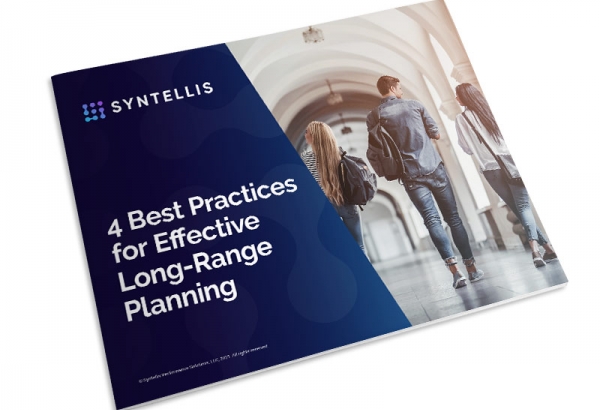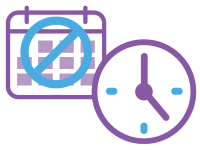When three-quarters of finance leaders believe higher education lags other industries in the adoption of modern tools and processes that can improve data transparency, reporting, and decision-making, it’s unusual to hear of an institution that claims to use data to drive all major financial decisions — but that’s the case at The University of North Texas (UNT) System.1
UNT System uses Syntellis’ Axiom™ Long-Range Planning (LRP) to evaluate potential new initiatives, quickly run scenarios that show decision-makers a range of positive and negative impacts, and enable an integrated financial planning structure encompassing financial statements, the budget, and strategic planning. The software investment is already paying dividends, says Kerry Romine, Director of Strategy & Planning.
“With Axiom Long-Range Planning, we’ve grown what we can do as an institution,” Romine says. “In the past, we might have made decisions that were ill-informed. Now we don’t have to worry about that because we make decisions based on data that we can stand behind.”
Integrated, transparent, easy to use
The University of North Texas System operates a shared-services model, employing about 500 in central administration. Before joining UNT System, Romine served in a variety of planning and finance positions with Fortune 500 manufacturers. He quickly learned about the stark difference between industry and academia in terms of financial planning.
“Manufacturing is about squeezing the very last drop of whatever product you’re trying to create, a mindset I’ve tried to bring to higher ed,” Romine says.
The idea to explore long-range planning software solutions came in response to the Board of Regents’ questions about the potential impact of tuition increases, new programs, capital investments, and other projects on the System’s long-range plan. “The board would ask, ‘Do you have a 3-, 5-, 10-year plan?’ And all we could reply was, ‘No, but we’ll get you one,’” Romine recalls.
Early efforts at long-range planning were complex, time-consuming, and entirely dependent on a single employee’s skills to run Excel projections.
The wish list for a long-range planning solution was threefold: easy to use, transparent, and integrated financial planning. “We wanted to blur the boundaries between our budget, our accounting structure, our annual financial reports, and our strategic plan,” Romine says. “We wanted a more integrated financial process overall.”
UNT System investigated several vendors and even considered making the existing manual process more robust before selecting Axiom, which was already in use and very popular at UNT Health Science Center.
“When it came down to decision-making time, there really was no question. We were going to go with Axiom,” Romine says. “We liked what Axiom software could do. It was absolutely the right decision.”
Easily run multiple scenarios
Axiom Long-Range Planning works as a stand-alone product, which is how UNT currently uses it. Balance sheet data is loaded from the general ledger (GL) with a flat-file upload. The next phase is to do a full GL integration with Axiom as part of the Axiom™ Budgeting and Forecasting solution implementation that is currently in process. The university system will also adopt Axiom™ Capital Planning and Axiom™ Tuition Planning next year.
Romine used LRP to model four scenarios related to COVID-19 impacts: from moderate to devastating and two in between. “You can easily run as many scenarios as you want, because all you’re really doing is changing the inputs and rerunning the scenario,” Romine says of the dynamic driver-based scenario modeling functionality. “It takes a few minutes as opposed to all day, as it did when we solely used Excel.”
Axiom also has helped evaluate a dormitory request for their urban campus, University of North Texas at Dallas, which has a current enrollment of about 3,700. By inputting different dorm sizes and configurations, Romine quickly prepared a list of options and the costs associated with each to help guide leadership’s decision.
LRP allowed UNT System, for the first time, to produce five-year plans with accompanying ratio calculations to present with the annual budget. “The five-year plans and financial ratios give management and the Board a deeper understanding of how our resource planning processes affect our financial posture,” Romine said. “We are a not-for-profit entity, but we have an obligation to our students and the taxpayers of Texas to manage our limited resources effectively and efficiently.”
Highlight bottom-line impacts
LRP is an integral part of initiative planning, which consists of the business need, market analysis, operating plan, and the financial analysis — where LRP shows the bottom-line impacts of any proposal.
Sometimes LRP makes it clear that the numbers just won’t work, providing the objective data leaders need to make informed decisions.
“From a policy perspective, you can’t be afraid to share bad news,” says Romine. “But when you’re about to tell somebody who is three, four, or five levels above you that their idea is not feasible, you better have your ducks in a row. It’d better be a data-driven decision, and that’s where long-range planning comes into the picture.”
Making it easy to analyze large amounts of university data to drive decisions is where Long-Range Planning really stands out from other solutions, Romine says.
“I’m a huge Axiom fan. It gives us all the visibility that we need, and it’s easy to use. We used another system that was dense and hard to navigate. And Axiom is just not."
Curious about how Axiom can help your institution with long-range planning?
1 Syntellis Performance Solutions. Higher Education Financial Trends
Your peers also read...

6 Benefits of Strategic and Long-Range Planning in Higher Education

Practical Use Cases for Axiom Long-Range Planning in Higher Education





